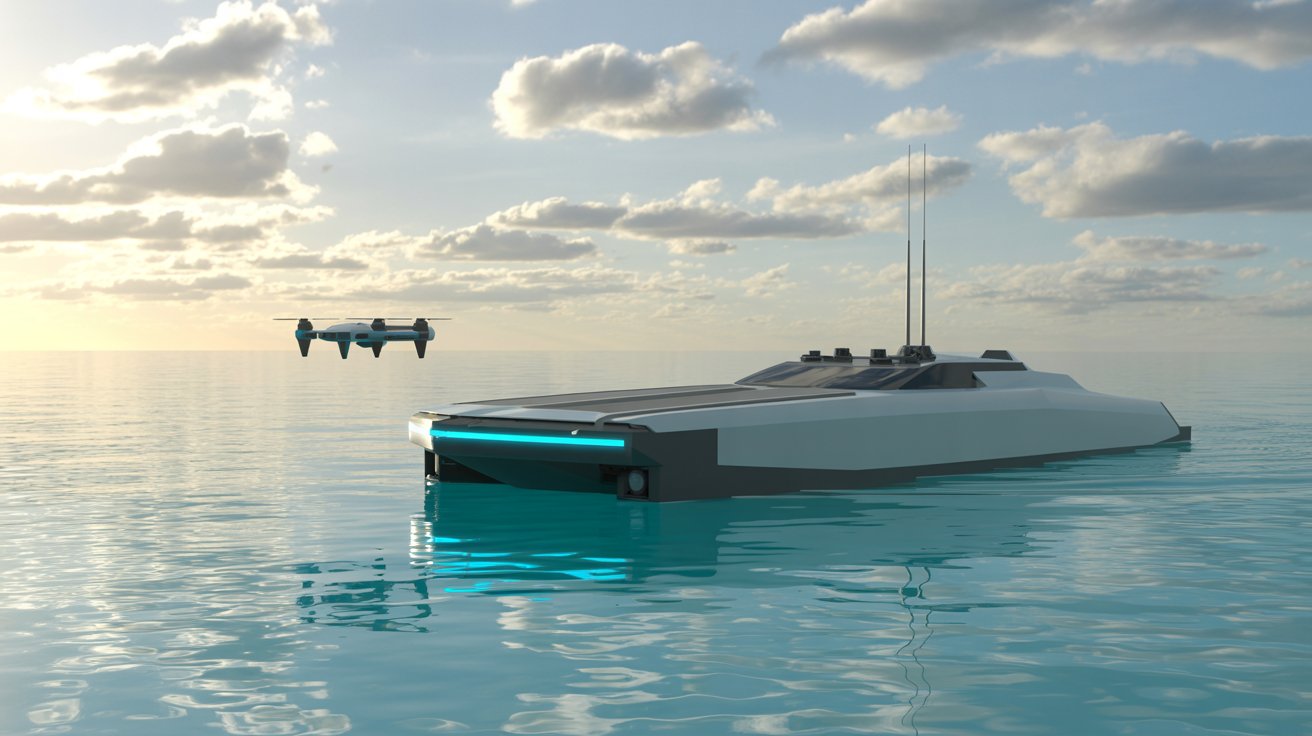This report analyzes the unmanned surface vehicles (USVs) market from 2025 to 2030. The report describes various industry and technology trends currently prevailing in the unmanned surface vehicles market. The market size is estimated to be USD 0.82 billion in 2025 and is projected to reach USD 1.59 billion by 2030, at a CAGR of 14.1%. The unmanned surface vehicles market is growing due to several key reasons. There is an increase in the need to check water quality and map the ocean. Countries also want better security at sea because of rising threats. At the same time, oil & gas companies are spending more money on offshore projects, which increases the use of USVs for inspection and monitoring.

Download PDF Brochure @
https://www.marketsandmarkets.com/pdfdownloadNew.asp?id=220162588
Based on hull type, the single hull type is the fastest-growing segment in the unmanned surface vehicles market because of its smooth design, which reduces water resistance and increases speed. This design helps the vehicle move faster, making it perfect for quick surveillance, emergency missions, and gathering real-time data. The single hull is lighter, so it creates less drag and uses fuel more efficiently, which is crucial for long missions. These benefits make the single hull type the top choice when fast, agile performance is required, boosting its growth in the unmanned surface vehicles market.
Payload systems are the largest segment by system in the unmanned surface vehicles market because they determine the vehicle’s capabilities. Businesses and defense agencies choose USVs with higher payload capacity to carry essential tools like sensors, communication equipment, and other mission-specific technology. A strong payload capacity lets operators switch equipment quickly between missions, saving time and money. It also means customers can upgrade technology without buying a new boat hull. Because of this flexibility and future-proofing, payload systems lead to growth in the unmanned surface vehicles market.
Based on region, North America leads the unmanned surface vehicles market because of several clear business advantages. First, defense budgets in the US and Canada are high, and military agencies depend on USVs for missions such as surveillance, reconnaissance, anti-submarine warfare, and mine detection. This steady government spending encourages constant research, development, and procurement of new USVs, keeping North American manufacturers at the cutting edge of autonomous vessel technology.
Second, major US companies have built strong partnerships with naval and research organizations. These collaborations result in multi-year contracts to supply fully autonomous and intelligent USVs for tasks like environmental monitoring, hydrographic surveying, and scientific exploration. Long-term agreements help these firms plan production, invest in new technologies, and deliver reliable products that meet strict government standards.
Third, commercial sectors, especially oil & gas, have embraced USVs for offshore inspection, pipeline monitoring, and spill detection. As energy firms expand their offshore operations, they need cost-effective, unmanned solutions that can perform in challenging marine environments. North American USV platforms prove their value by integrating advanced sensors, communication systems, and data analytics tools, which help companies reduce risk and improve operational efficiency.
Finally, sustained investment from government agencies and private research centers drives innovation in autonomy, endurance, and payload flexibility. Expanded support contracts for medium-sized USVs ensure ongoing maintenance, operation, and upgrades. By combining strong defense leadership, a robust industrial base, growing commercial demand, and continuous funding for next-generation systems, North America secures its position as the dominant region in the global unmanned surface vehicles market.
Ask for Sample Report @
https://www.marketsandmarkets.com/requestsampleNew.asp?id=220162588
Key players in the unmanned surface vehicles market include L3Harris Technologies, Inc. (US), Teledyne Technologies Incorporated (US), Textron Inc. (US), Exail Technologies (France), Elbit Systems Ltd (Israel), MARTAC (US), Thales (France), LIG Nex1 (South Korea), ATLAS ELEKTRONIK GmbH (Germany), Saildrone, Inc. (US), Seafloor Systems, Inc (US), BAE Systems (UK), KONGSBERG (Norway), Israel Aerospace Industries Ltd. (Israel), Bharat Electronics Limited (BEL) (India), and SEA-KIT International (UK). These companies are well-represented geographically and offer a wide range of products. These businesses operate worldwide and provide a variety of products. To grow their market share, they rely on their diverse product portfolios and R&D capabilities.
